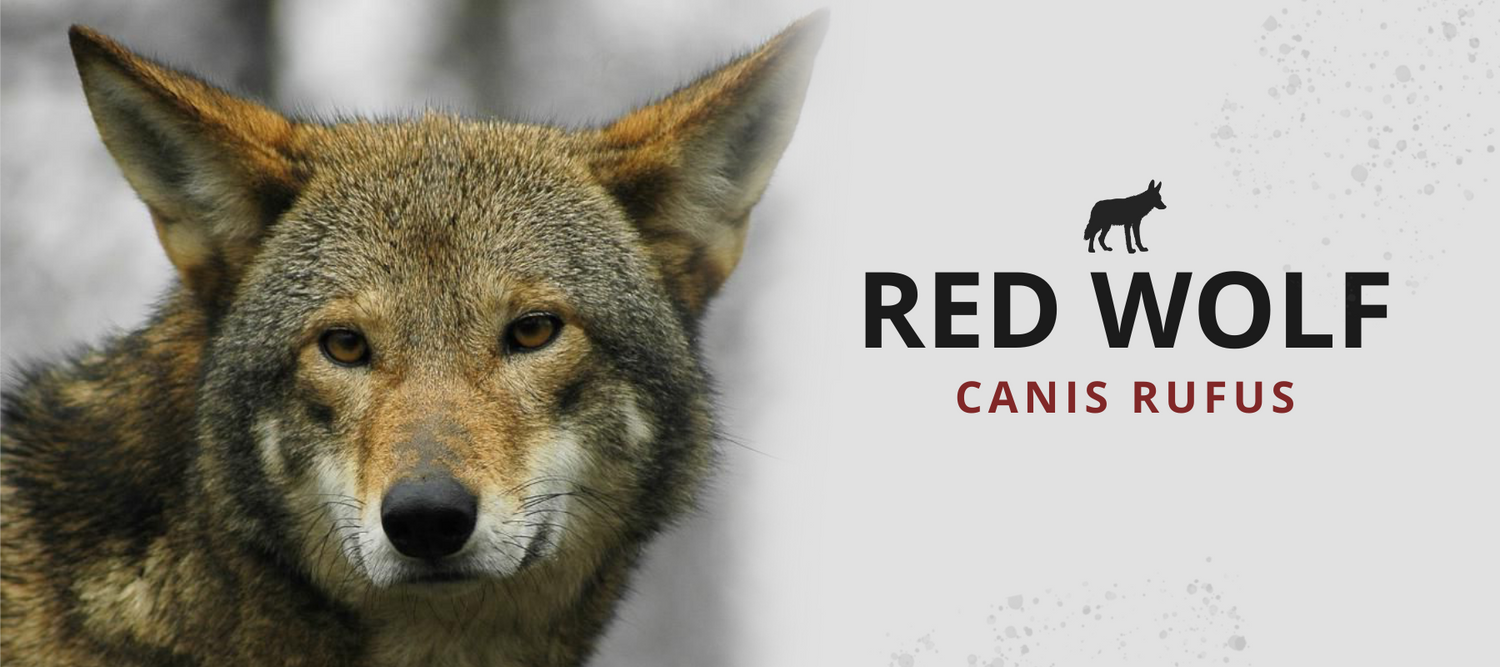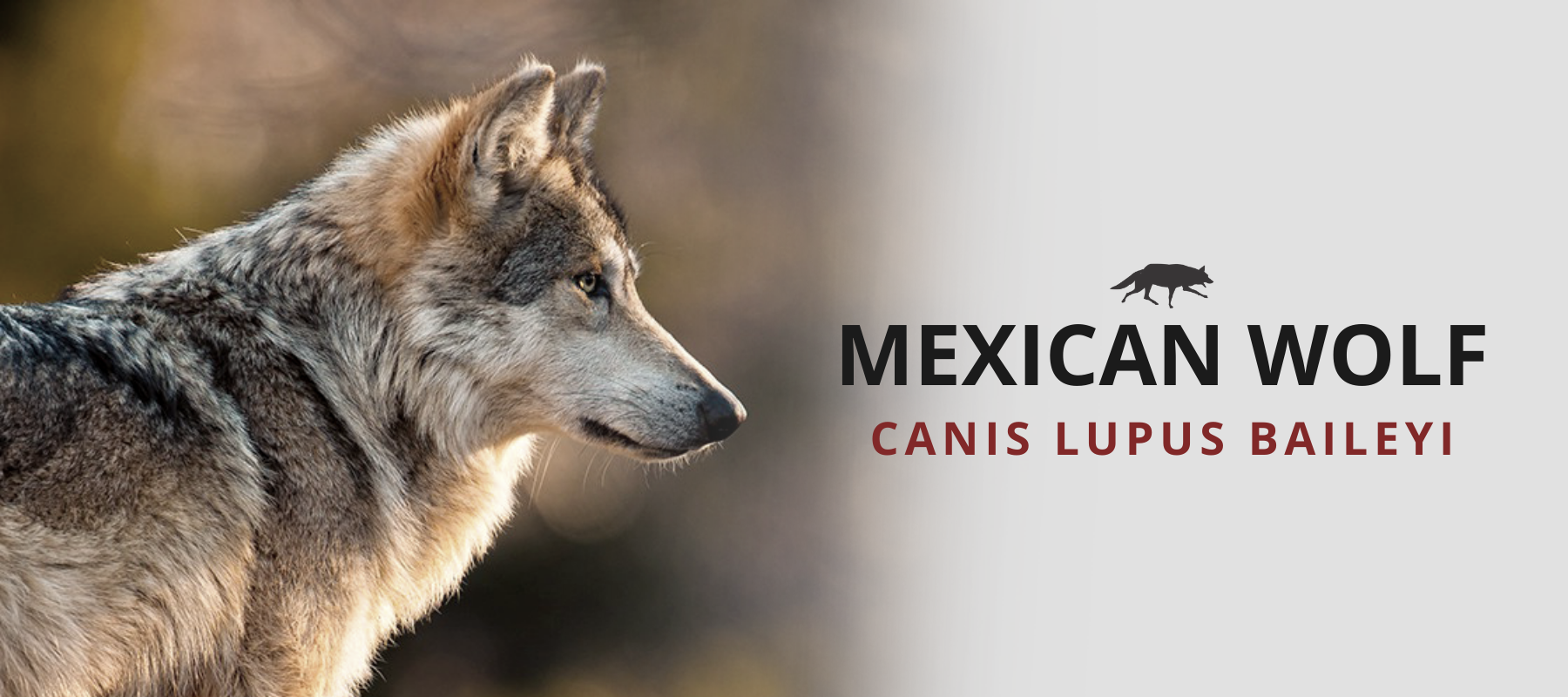
RED WOLF SPECIES
The red wolf species (Canis rufus), also called red wolf, is a carnivorous mammal of the family Canidae. Sometimes, this wolf species is considered to be a hybrid of coyote and gray wolf. The true status of this canine is not yet very clear. The red wolf is the rarest of all canines in the world.
- Common name: Red wolf
- Scientific name: Canis rufus, Canis lupus rufus
- Specie: Gray wolf / Coyote
- Type: Mammals
- Diet: Carnivore
- Average size: 3,1 to 3,9 feet
- Weight: 44 to 77 lbs
RED WOLF DESCRIPTION
The red wolf is one of the rarest canines in the world. It measures on average between 3,1 feet and 3,9 feet long with a tail of 0,8 to 1,1 feet for a weight ranging from 44 to 77 lbs. For years, the red wolf was not genetically differentiated from the gray wolf or the coyote. However, it is distinguished from the gray wolf by its smaller size, lighter weight, thinner legs as well as shorter ears and fur.
His coat is cinnamon red or fawn with shades of gray and black. The back of the body tends to be dark and the tail has a black tip on the tip. The muzzle of the wolf is in tawny tones and shades. Once winter falls, the wolf's coat radiates an astonishing red that earned him the name red wolf. The moult takes place every year in summer.
The red wolf also has certain peculiarities such as being able to stand on its hind legs or to be able to reproduce with the gray wolf and the coyote.

RED WOLF HABITAT
The red wolf lives in the southeast of the United States, near the Atlantic coast, north of the Ohio Valley and central Pennsylvania, west of Texas and south of Missouri. Following persecution in the 20th century, the species was declared extinct in the wild in 1980 after the last 17 wild red wolves were captured to begin a captive breeding program.
Currently, red wolves are reintroduced into areas of their historic range. In 2003, the free-roaming red wolf population included approximately 100 individuals in 20 family groups. To date, approximately 270 individuals remain in the wild.
For years, many red wolves lived in forests, wetlands and mountains before it became an endangered species. To this day, it is the rarest wolf species in the world. There are now a few individuals that have been reintroduced into the wild in mountainous areas and other protected forest areas, sheltered from human activities.

RED WOLF DIET
This wolf species is a predator. The red wolf diet consists mainly of meat: Mammals such as aquatic rabbits, white-tailed rabbits, marsh rabbits, nutria, deer, muskrats and raccoons make up the bulk of the prey they covet. He also happens to be content with carrion.
RED WOLF BREEDING
The breeding season of red wolves takes place between January and March. The gestation period lasts between 60 and 63 days, after which the female gives birth to a litter of 3 to 6 puppies.
Dens where the wolf pups are born are built in the dense vegetation in the fields, near the banks of a river or in the hollow of large trees. Cubs are fed and raised by the breeding couple as well as the young of an old litter.
It leaves the maternal den when they reach 15-20 months old, the sexuality maturity. The average life expectancy in the wild is 4 years. Nevertheless, a captive individual lived until 14 years old.

RED WOLF BEHAVIOR
The red wolf is generally a twilight species with peaks of activity at dawn and dusk. He generally lives as a couple, sometimes accompanied by his cubs. In his home range, he hunts on small plots for 7 to 10 days and then moves to another area.
The vocalizations of the red wolf are supposed to be intermediate between those of the coyote and the gray wolf. It communicates with its congeners with a complex series of behavioral, tactile, chemical and auditory signals.
Body language, pheromones and vocalizations are used to communicate in relation to social and reproductive status and mood.
RED WOLF PREDATORS
The red wolf species is mainly the prey of other canids, including its congeners from other families, gray wolves and coyotes. Young cubs are also attacked by other large predators such as alligators, large raptors and bobcats.

RED WOLF CONSERVATION
The red wolf is a species classified as critically endangered on the Red List of Threatened Species.
In 1967, the red wolf was listed as threatened by the US Fish and Wildlife Service engaged in a rescue effort to protect the remaining populations. Fourteen remaining red wolves were placed in a captive breeding operation, they became the founders of the population of actual red wolves.
The Port Defiance Zoo and Aquarium in Tacoma, Washington was the first facility to participate in red wolf conservation by beginning breeding red wolves for the conservation program. In 1976, the first experimental attempt to reintroduce the red wolf into natural habitat occurred on a 5,000 hectare island located in the Cape Romain National Wildlife Refuge in South Carolina. In 1977, the total number of wolves in captivity was 35 specimens.
In 1987, 7 years after being declared extinct in the wild, a new release took place this time at the Alligator River National Wildlife Refuge in North Carolina. Wolves bred there the following year, which gave birth to the first wild wolves born in the recovery program. By the mid-1990s, there were more than 50 red wolves, at least 37 of which were born wild.
In 1993, the Pocosin Lakes National Wildlife Refuge was added to the reintroduction program, and two families of red wolves were released. To date, some zoos are involved in reintroduction programs. This is the case of The Great Smoky Mountains National Park in Tennessee that has been chosen for the species' conservation program. A number of adults born in captivity were released into a park of 500,000 hectares in 1991.
The objective of reintroducing the red wolf species calls for a captive population of around 200 wolves and a wild population of over 300 in order to maintain appropriate levels for genetic diversity. Today, there are between 275 and 300 live red wolves, of which about 220 are captive. Opinion polls continue to show that local, regional and national support for the program is favorable.
RED WOLF SUB-SPECIES
To date, the current situation of the red wolf species is not very clear. Indeed, its status as a separate species or subspecies is not fully determined. Some biologists suggest that it is in fact only a hybrid resulting from the cross between the gray wolf and the coyote.
Other scientists consider that it is rather a subspecies of gray wolf and its vernacular name would therefore be Canis lupus rufus.
Actually, the red wolf is considered as a monotypic species, since the other two existing subspecies are now extinct. Canis rufus floridanus has been extinct since 1930 and Canis rufus was declared extinct around 1970.
Canis rufus gregoryi, the surviving subspecies, disappeared from its natural environment in 1980 and was considered extinct in the wild. Currently, red wolves living in the wild all belong to this subspecies.
Support the canis rufus species by decorating your interior with a magnificent red wolf canvas. To learn more about wolves, read our blog post on the Mexican wolf.




